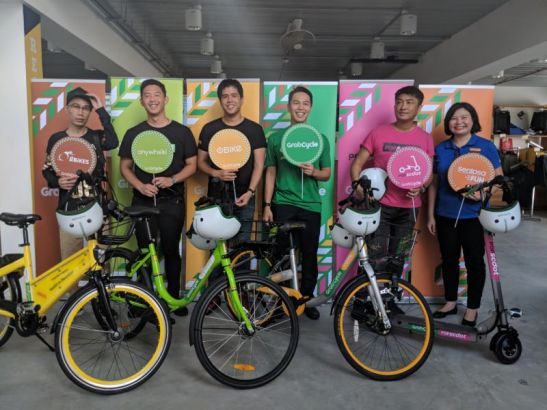[Opinion] Does E-Scooter Sharing Work
Thoughts on the Growth of E-Scooter Sharing Providers
Bike sharing is taking off everywhere, in China, Singapore and many other countries all around the world. Venture capitalists have poured millions if not billions into it.

Even Southeast Asian rideshare unicorn Grab has stepped into the game in their recent announcement of GRABCYCLE, partnering with bicycle share and e-scooter share operators.

It should only follow that electric scooter sharing – which involves a more comfortable ride without any kind of physical exertion – would take off as well.
But will it really?
Bike sharing provides a great convenience to people, and the public is taking to it, especially in Singapore. Everyday you can see many people riding about in one of those Ofo or Mofo bikes. However, problems with the business model nonetheless exist and bike sharing companies have yet to find a good solution for them.
So… What about electric scooter sharing or renting then? There are startups such as Popscoot in Singapore doing it. The idea is a noble one and is fundamentally sound, but as to whether it can work in the long run, that remains to be seen. As a commuter, I would gladly pay a dollar or two to ride an e-scooter back to my house from the MRT station as it would save me a long and sweaty walk.
As much as I would love it to become a common sight in neighborhoods all over Singapore, here are the three main challenges facing e-scooter sharing companies worldwide
-
Vandalism
There have been numerous examples all over the world, from Ofo bikes thrown off buildings to bikes with number plates and locks removed. Start up companies such as Bluegogo – the third largest bike sharing outfit in China – have folded, with vandalism being one of the main reasons. The massive capital it takes to run a successful ride sharing company means that smaller players simply are not able to withstand losses in the short run.
Another example could very well be seen from the story of BlueSG – the first electric car rental service in Singapore. Those cars have ended up suffering a similar fate to mass sharing bicycles in Singapore. Photos of dents on the car and dirty interiors left by inconsiderate users were widely shared by social media shortly after they launched.
These companies that strive to provide a public service or solve a genuine problem would eventually end up with high maintenance costs due to these small but significant number of inconsiderate users. For ride sharing companies that rent out expensive mobility vehicles such as e-scooters, it would be doubly so. Maintenance costs may represent an insurmountable cost for them in the end.
The ugly truth of the matter is: if people don’t even bother to take care of a $100 shared bike, are they any more likely to take good care of a $1000 shared e-scooter?
-
At the mercy of elements
Electric scooters, as compared to manual bicycles have another disadvantage: they required electricity to run and are therefore are vulnerable to water damage.
In Southeast Asia, where it rains regularly and without warning, an e-scooter would be at the mercy of the weather. Unless it has solid weather and water proofing, with at least with a IP57 rating, water damage may end up being another massive cost for the e-scooter sharing company.
Even then, an e-scooter with a solid IP57 rating would be hard pressed to weather constant rain and sun, wear and tear without suffering any kind of permanent damage. Eventually, the electronics within would need to be replaced, and it would probably need to be done regularly.
-
The need for docking/charging stations
One big draw of bike sharing schemes is that bicycles can be parked anywhere, as long as they are parked considerately. E-scooter sharing, however, needs docking and charging stations to work.
And this presents another challenge for companies. The need to build and develop the infrastructure necessary for e-scooter rental to work is yet another barrier to its success. It is not only another cost for the e-scooter sharing company, but also an added inconvenience for users.
Singaporeans love electric scooters precisely because its personal. It can be parked outside their office, locked outside train stations and taken into their homes. It takes you to your destination, without having to walk one step. But with e-scooter sharing, the user has to go to the docking station before and after using it. And if the commuter has to walk another 5-10 mins to get to the docking station, he or she may choose another commuting option instead.
Until these docking stations become as commonplace as bicycle stands, bicycle sharing will still have an advantage of e-scooter sharing programs.
Too Many Challenges
You can educate people but you cannot change their mindset, no matter how misguided.
In a world where shared bicycles are thrown into canals, damaged, flung from high places, and left anywhere as one pleases, it would only seem that an e-scooter which is 10 times more expensive wouldn’t stand a snowflake in hell’s chance.
But perhaps, there are ways around these problems and measures to overcome these challenges. If someone manages to figure it out, all the better for us. I, for one, would be extremely happy to live in a world where e-scooter rentals are available at my fingertips.
